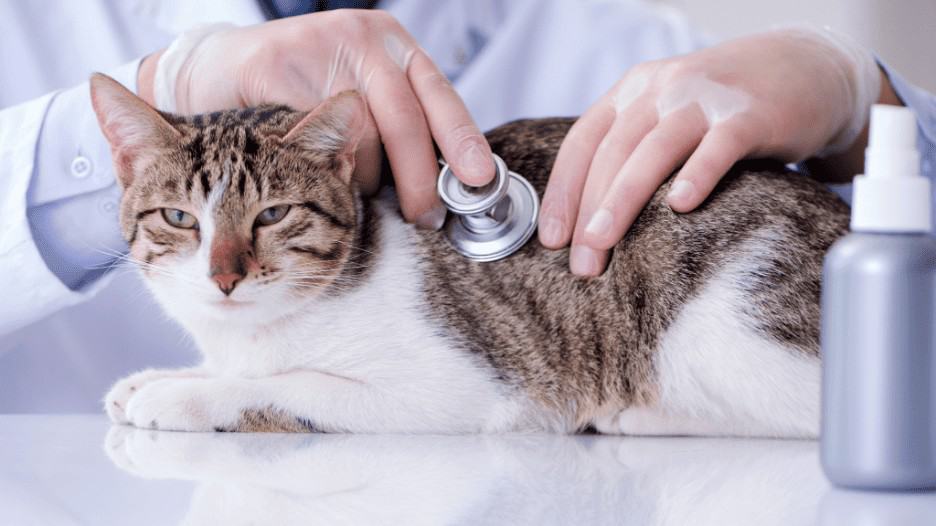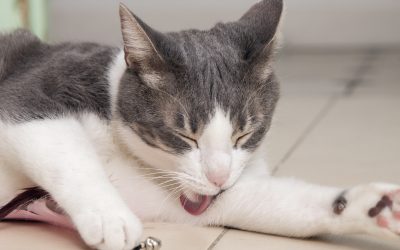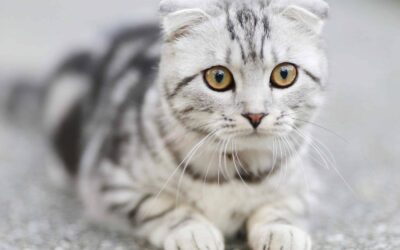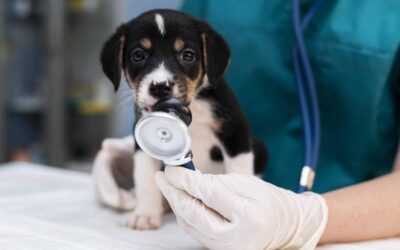How Often Do You Take A Cat To The Vet? [A Simple Guide]

Taking your cat for regular checkups at the vet is one of the most important things you can do as a pet owner, but determining how often you should take your cat to the veterinarian might be challenging. In this article, we will provide you with an easy-to-understand guide to the importance of taking your cat to the veterinarian regularly, as well as the frequency with which you should do so.
How Often Should You Take Your Cat to the Vet?
Several criteria, such as your cat’s age, general health, and lifestyle, should be considered when determining how often you should take your cat to the vet. In general, kittens should see the veterinarian once every three to four weeks; adult cats should visit the veterinarian once yearly for a checkup and any required vaccines, and elderly cats should visit the veterinarian for checkups at least twice per year.
How Often Should You Take Your Cat to the Vet Based on Their Age?
Here’s the complete breakdown of how often you rake your kitty to the vet based on their age.
How Often Should You Take My Kitten to the Vet? (6-16 Weeks)
Kittens between six and sixteen weeks should see the veterinarian once every three to four weeks. During these checkups, the kittens will receive a series of vaccines that will help protect them against infectious diseases as well as ailments that can be fatal.
How Often Should You Take My Adult Cat to the Vet? (1-7 Years)
Adult cats (between 1-7 years) must go for annual checkups and vaccinations. Certain cats with pre-existing health concerns may require more regular visits to the veterinarian.
How Often Should You Take My Senior Cat to the Vet? (7+ Years)
It is advised that once your cat reaches the age of 7 years, they get full physical examinations twice a year. This is because there is a greater chance of finding a medical condition in this age range. Dental disease, arthritis, and renal disease are just some of the health issues that become more likely to manifest in older cats. It is essential to keep an eye out for these issues as your cat ages.
It is essential to remember that the suggestions mentioned above are broad in nature and that your cat’s specific requirements may differ. Make an appointment with your pet’s veterinarian to discuss the ideal routine for your cat’s health.
What to Expect During a Routine Vet Visit
When you take your cat in for an annual checkup, the veterinarian will do a comprehensive physical assessment. This examination will include the following:
- Body Temperature evaluation: Vets first evaluate your kitty’s body temperature. It requires the use of a rectal thermometer. The average cat’s body temperature ranges from 100.4 to 102.5 Degrees Fahrenheit.
- Coat Examination: Your cat’s skin and coat will be inspected for any indications of parasites, such as lumps or bumps.
- Assessment of Your Cat’s Weight: Your cat’s weight will be measured and compared to your cat’s prior weight to look for any major differences.
- Abdominal palpation: During this examination, the veterinarian will apply light pressure to your cat’s stomach in order to detect any abnormalities or areas of pain.
- Eyes and ears examination: Your cat will have its eyes and ears examined by the veterinarian so that they may look for any symptoms of infection or sickness.
- Dental Exam: Your cat’s teeth and gums will be inspected to look for any symptoms of dental illness.
- Heart and Lung Exam: During this part of the test, the veterinarian will listen to your cat’s heart and lungs to detect abnormalities.
- Vaccinations: Your cat will, if necessary, get any vaccinations that are required during the appointment, including any vaccinations that are recommended.
Depending on your cat’s age and the current state of its health, your veterinarian may also suggest other procedures, such as blood work, urinalysis, or X-rays, in addition to the ones that have already been described. It is also essential to bring up any concerns or questions you may have regarding your cat’s health and well-being while you are there. To help guide your conversation with the vet, check out our article 8 Questions to Ask During Your Cats’ Vet Visit.
Always remember that consistently taking your cat to the veterinarian is essential to ensure his or her continued good health. You can help guarantee that your furry pet has a long and healthy life by maintaining a regular schedule for your cat’s checkups and paying attention to the advice given to you by your veterinarian.
How to Identify a Wound in Your Cat
You should determine the nature of the wound as soon as possible if you think your cat has one. Some obvious symptoms of a wound are bleeding, swelling, redness, or pain in a specific location. Cats with this condition may also appear more sluggish than usual and lick or scratch the afflicted region excessively.
You must take your cat to the veterinarian as soon as possible if you have any reason to believe that it may have sustained a wound. When a pet owner takes their pet to the doctor for a wound, the veterinarian will examine it and look for any other injuries. The fur surrounding the area will be shaved, if necessary, so they can look closer at it. The veterinarian will clean the area, apply a dressing on it, and may recommend medicines to avoid infection. A wound assessment aims to diagnose the kind of wound and select the most appropriate treatment to hasten the healing process and prevent infection.
Types of Cat Wounds
Puncture Wounds
These are deep, puncture wounds that sharp items like nails, shards, or bites from other animals can produce. A combination of these causes can also cause them. Puncture wounds are notoriously difficult to spot and often don’t bleed excessively, but if they go untreated, they can pose serious health risks.
Bite Wounds
Fights with other animals are the most common source of these wounds and are most commonly found on the animal’s legs, head, and neck. Wounds caused by bites can be extremely harmful since they can rapidly get infected and inflict great damage.
- Fact: Cats that sustain bite wounds from either another cat or outdoor encounters should undergo testing for Feline Immunodeficiency Virus (FIV).
Minor Cuts and Abrasions
Minor scrapes or scratches frequently bring on these superficial wounds. Even if they don’t require emergency veterinary assistance, you still need to look for indications of illness.
Abscesses
These are wounds that often develop as a result of an infection. They are painful and filled with pus. Abscesses often need to be surgically drained in addition to receiving antibiotic therapy.
Sores or Blisters
Many things, such as allergies or friction, among other things, can bring these on. They can require topical therapy or some medicine.
What Are the Signs of an Infected Wound on a Cat?
Keep an eye out for indications of illness if your cat ever sustains a cut or scrape. The following is a list of frequent indicators that a cat’s wound has become infected:
- Inflammation: If the wound has gotten worse or reddened over time, this may be a symptom of an infection.
- Discharge: An obvious indication of an infection is the presence of pus or any other discharge from the wound.
- Foul Odor: The presence of a putrid odor suggests that there may be an infection present in the wound.
- Pain: If you notice that your cat is in more pain than usual or is avoiding the injured area, this may be a sign that they have an infection.
- Inactivity: If you notice that your cat is sleeping more than usual, this might be an indication that it has an illness.
If you observe any of these symptoms, you should take your cat to the veterinarian as soon as possible. Infected wounds pose a significant risk to a cat’s health and can result in more severe medical issues if untreated.
Maintaining a high level of personal cleanliness for your cat is necessary to reduce the risk of infections from cuts and scrapes. This involves bathing and grooming them regularly and ensuring that their habitat is spotless and clear of dirt. In addition, you may hasten the healing process by adhering to the appropriate wound care practices, such as washing and dressing the wound in accordance with the recommendations of your veterinarian.
To learn more about wound care for cats and how to improve your cat’s hygiene, check out the article: 5 Ways to Improve Your Cat’s Hygiene.
How to Treat a Cat’s Wound
If you discover that your cat has a wound, treating it as soon as possible is critical to avert infection and expedite healing. The following are some of the actions that may be taken to treat a wound on a cat:
- Thoroughly Clean The Wound: Warm water should be used to carefully clean the wound with a clean cloth or gauze. A saline solution can also be used to clean the wound. It is essential to refrain from using strong soaps or chemicals that might aggravate the area.
- Stop Bleeding: If the wound is bleeding, apply pressure to the area with a clean towel or gauze and see if that stops the flow. Seek quick medical attention from a veterinarian if the bleeding does not cease within the first ten minutes.
- Use an antibiotic ointment on the wound: After the damage has been thoroughly cleaned and dried, a skinny coating of antibiotic ointment should be applied to the injured region. This may assist in warding off infection and facilitating the healing process.
- Wrap or Bandage the Wound: Depending on the exact spot of the wound, you might have to cover it with a dressing or wrap to protect it from additional harm and to prevent your cat from licking or biting at the wound. This may be done by covering the wound with a bandage or wrap.
- Monitor the wound: Make sure to give the wound a once-over every day to look for any indications of infection, such as irritation, swelling, or discharge. Seek emergency medical attention from a veterinarian if you observe any of these symptoms, or read this handy article regarding wound care.
If the cut on your cat is deep or wide, or if it’s located near their eyes or any other sensitive places, it is preferable to seek the assistance of a veterinarian as soon as possible.
How Vets Treat Cat Wounds
When you take your cat to the veterinarian to treat a wound, the type of care received will be determined by the severity of the lesion and its location. The following is a list of common treatments that veterinarians use for wounds in cats:
- Cleaning and Debridement: The veterinarian will carefully clean the wound to eliminate any foreign matter and any germs that may be present. They might also need to debride the area by removing any dead tissue to facilitate recovery.
- Antibiotics: If the vet determines that the wound is infected or has a high risk of becoming infected, he or she may prescribe antibiotics to either cure the infection or prevent further infections.
- Pain Management: If the vet determines that the wound is unpleasant, he or she may give your cat pain medication to make him or her more comfortable.
- Dressing the Wound: The veterinarian could use a bandage or another kind of dressing to cover the wound to prevent infection and speed recovery.
- Surgery: In certain instances, an operation may be required to either heal the wound or remove any foreign items.
It’s critical to carefully adhere to the directions provided by your veterinarian and to regularly care for the wound once therapy has been administered. If you see symptoms consistent with an infection or your cat’s health worsens, call your veterinarian as soon as possible.
What to Do if Your Cat Needs Urgent Care?
As a cat owner, being prepared for emergencies is essential. If you know the symptoms that demand immediate attention from a veterinarian, you might save your cat’s life. The following is a list of frequent signs and circumstances that call for close medical attention:
- Loss of consciousness
- Incapacity to pee or defecate
- Convulsions or seizures
- Bone fractures or severe lameness
- Extreme fatigue or unresponsiveness
- Difficult breathing or choking
- Extreme or persistent bleeding
- Vomiting or diarrhea, especially dysentery
Ingestion of poisonous substances, including chemicals, plants, or medicines. In such circumstances, you must seek veterinarian treatment as soon as possible. If your regular veterinarian is closed, you should seek a veterinary clinic that provides emergency services in your neighborhood. It is recommended that you always have a first aid kit available in case your cat ever needs it in case of an emergency.
How to Safely Transport Your Cat to the Vet
Going to the veterinarian with your feline buddy may be nerve-wracking for you and your furry companion. You may, however, make the procedure far simpler with adequate planning and attention to detail. Here are a few helpful tips for getting your cat to the veterinarian:
- Train Your Cat to Be Comfortable in the Carrier: The carrier you choose for your cat should provide a secure environment where they may relax. Leave the pet carrier in your house with the door open and put some goodies or toys inside so your cat will become accustomed to seeing it. Due to this, your cat will be more likely to connect the carrier with pleasant experiences.
- Make Sure the Carrier Is Fastened: If you are driving in a car, you need to ensure that the carrier is properly fastened so that it does not move around. You may fasten it using a bungee cord, straps, or a seat belt. When the driver applies the brakes suddenly or makes a sharp turn, this will protect the carrier from slipping or toppling over.
- Use Comfort Items: During the car ride to the veterinarian, be sure to provide your cat with some familiar items, such as a blanket or toy, to help keep it calm and secure.
- Do Not Leave Your Cat in the Car: You should not leave your cat in the car alone for any amount of time. Because of the rapid heating that can occur in vehicles, there is a chance that your cat can suffer from heat stroke or become dehydrated.
- Keep Calm: Cats can feel nervous or stressed out when their owners are nervous, so it’s crucial to be calm and soothing during the drive to the veterinarian’s office. Cats can sense when their owners are apprehensive or stressed out. Use a calm tone while conversing with your cat, and give it reassuring pats and rubs.
How to Make the Vet Visit Less Stressful for Your Cat
There are many things you can do to make your kitty companion’s trip to the veterinarian less stressful.
- Use calming techniques: There is a wide selection of products available, like pheromone sprays and treats, that you may use to assist in calming your cat. These items are modeled after the natural pheromones that cats emit when they are content and confident in their environment.
- Make sure your appointments are at less hectic times: If you have a cat that is easily stressed out by loud noises and large groups of people, you may want to schedule their visits at less popular times of the day, when there are fewer people and dogs in the waiting area.
- Bring familiar items: Bringing familiar objects from home with you, such as your cat’s favorite blanket or toy, will make them feel more at ease while at the veterinarian.
- Prepare necessary information: At the visit, you should bring any pertinent medical history and any drugs you are now taking. This information can assist your veterinarian in providing better-individualized treatment for your cat.
You can help make the trip to the veterinarian less traumatic for your cat by following these guidelines, and guarantee that they receive the highest possible level of care.
Is It Possible for Pet Insurance to Cover Vet Visits?
Yes, some pet insurance providers, such as Odie, allow you to boost your insurance plan to include coverage for Office Visits & Exam Fees. Insurance for your four-legged buddy is a sort of protection that can reduce the financial burden of providing them with veterinarian treatment. After you have met the deductible, the company will pay for a portion of the remaining medical costs associated with your pet. Although unanticipated accidents or illnesses are often covered by pet insurance, routine veterinary appointments and preventative treatment are sometimes excluded from coverage.
Odie Pet Insurance is an example of a pet insurance company providing a wellness plan that may be added to your standard pet insurance. Enrolling in the wellness plan will cover a wide range of preventative healthcare services, such as immunizations, wellness checks, and protection against fleas and ticks.
The expenses associated with an unforeseen accident or sickness can rapidly build up if you do not have pet insurance. For instance, the cost of healing a fractured bone might range from $2,000 to $5,000, while cancer treatment can cost as much as $10,000 or more. The monetary burden of these unforeseen bills might be made more manageable with the assistance of pet insurance.
In 2020, pet insurance policyholders made claims for more than $1.3 billion in veterinary expenditures, with the average claim value being $791, according to a North American Pet Health Insurance Association survey. You won’t need to stress about the costs of providing your cat with top-notch medical attention when you have pet insurance since you’ll be covered no matter what.
It is essential to remember that not all pet insurance policies are made equal, so it is necessary to research and evaluate various possibilities to obtain the best coverage for your cat’s particular requirements and financial constraints.
What Expenses Does Pet Insurance Cover for Your Cat?
Various plans are available for insuring your pet, each with its own coverage alternatives and advantages. Let’s discuss three distinct kinds of insurance policies that may be purchased for cats:
Injury & Illness Pet Insurance
Odie’s Injury and illness pet insurance covers unexpected veterinarian costs connected to damage or disease, such as those incurred due to accidents, illnesses, or inherited disorders. Although the specifics of coverage might vary from one plan to the next, most policies include coverage for diagnostic procedures, medicines, surgical procedures, hospitalization, and emergency care.
Accident-Only Pet Insurance
This Odie Accident Only pet insurance covers only injuries caused by accidents, such as fractured skulls, bite wounds, or ingesting foreign substances. It’s possible that it won’t cover preexisting ailments or illnesses.
Wellness and Routine Pet Care Plan
Odie’s Wellness Plan (add-on to a basic plan) pays for preventative veterinarian care, which includes yearly checkups, vaccines, flea and tick prevention, and dental cleanings/examinations. Spaying and neutering may also be included under some policies.
How Much Does Pet Insurance Cost?
The costs of pet insurance are highly variable and rely on several factors, such as the age of the pet, the breed, and the coverage options. Odie Pet Insurance provides several plans, each with a unique combination of coverage and premiums.
The monthly premiums for Odie’s pet insurance for cats may range from $15 to $50 on average, and the coverage determines the price and plan the customer chooses. The cost of pet insurance may be affected by each of the following factors:
- Waiting Periods: Before coverage kicks in, most pet insurance policies include a waiting period, which can be anywhere from a few days to several weeks on average.
- Annual Limits: Some pet insurance policies include a yearly cap on the total coverage they will pay out in any given year. After reaching this limit, the pet owner is responsible for paying any further expenditures that may occur.
- Pre-existing Conditions: If a cat has an existing medical condition, such as a chronic sickness or injury, it is possible that a pet insurance policy may not cover the condition or that coverage for the disease would be limited to specific scenarios.
- Co-Insurance: Some pet insurance plans have a co-insurance provision, where the policyholder is responsible for a particular portion of the entire cost of veterinarian care.
When trying to figure out how much cat insurance will cost, owners need to evaluate the various policies offered and consider the degree of protection their furry buddy needs.
Read more about the limits and benefits of your pet insurance here.
References:
- https://www.sciencedirect.com/science/article/abs/pii/S0195561608001952
- https://www.msdvetmanual.com/cat-owners/routine-care-and-breeding-of-cats/routine-health-care-of-cats
- https://toe-beans.com/blogs/pet-blog/how-often-take-cat-vet
- https://www.tandfonline.com/doi/abs/10.1207/s15327973rlsi3704_2
- https://www.vetcarepethospital.ca/beginners-guide-ferret-care/
- https://thefluffykitty.com/how-often-should-i-take-my-cat-to-the-vet-for-a-check-up
- https://www.mdpi.com/2076-2615/11/4/1114
- https://petcube.com/blog/how-often-should-i-take-my-cat-to-the-vet/



